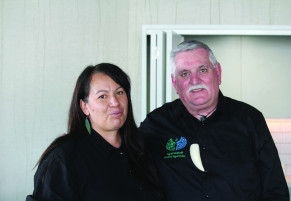Poutini Unveiled: a Tribute to Ngāi Tahu History
Feb 12, 2025

NĀ NIKKI-LEIGH CONDON
Paul Madgwick (Kāti Māhaki) has always known he was a storyteller, feeling the pull of history and its legacy from an early age. Deeply committed to Kāi Tahu narratives, he published his landmark work, Aotea, in the early 1990s – a significant achievement that has now culminated in his latest release, Poutini: The Ngāi Tahu History of the West Coast.
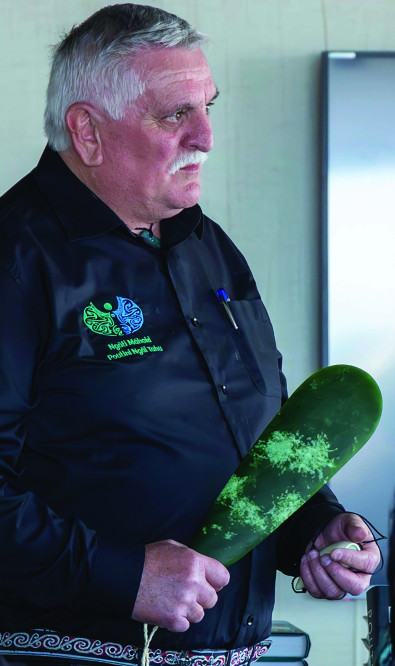
“I wanted to ensure we were telling our own stories,” Paul says. “And I took it as my responsibility to make sure they were told correctly.”
For Paul, Poutini is more than a history book; it’s a deeply personal project, an effort to capture the voices, events and landscapes that have shaped the enduring presence of Kāi Tahu on the West Coast.
Growing up in Hokitika, Paul was surrounded by the oral histories of his people. “My interest began with hearing conversations from all of the aunties and uncles who would gather at mum and dad’s,” he recalls, describing the whānau gatherings that drew his kaumātua together. “Sadly, not many people back then wanted to listen to what they had to say, but I did. I was always interested.”
From these early years, he was immersed in stories that revealed the complex history of Kāi Tahu and Te Tai o Poutini: stories of people, land, whakapapa and migration, woven through generations. He began his first book at the age of 11, the history of Woodstock-Rimu near Hokitika, determined to complete it.He admits, with a smile: “I’ll finish it one day.”
The path from those early kōrero to creating Poutini has been one of dedication, patience, and deep respect for the voices he listened to as a rakatahi. His first major work, Aotea, is a detailed documentation of Kāti Māhaki history in South Westland and laid the foundation for his later research on the region.
Paul describes the journey from Aotea to Poutini as a natural evolution. “It just grew gradually from Aotea, when I was researching and writing about South Westland 32 years ago, because the stories are so intertwined.”
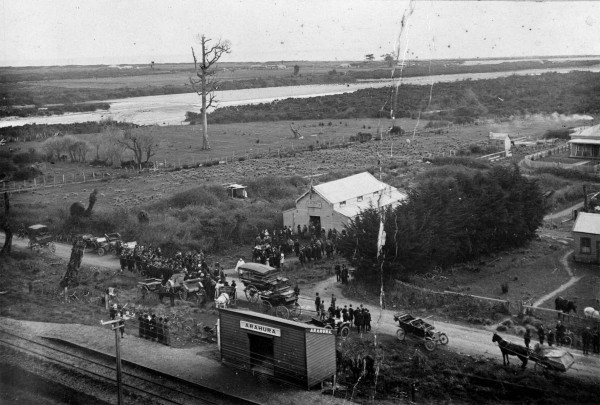
Above: Pākehā onlookers line the urupā terrace as a tangihanga is underway at the Tairea Hall, Arahura. This has been wrongly labelled as the funeral for Mr and Mrs Williams (Tuhuru), who dies days apart, however, that was in 1896 and well before motorcars arrived on the scene. It is more likely the tangihanga for Te Riaki Tauwhare, who died in 1914
Published in a limited print run, Aotea quickly became a rare collector’s item, widely referenced for its depth and accuracy in depicting the history of Kāi Tahu. And those stories became the foundation for a larger, interconnected narrative of the wider Tai Poutini region.
For both publications, Paul spent countless hours in libraries around the country, piecing together fragmented records and stories to create a fuller picture. “It started in the early 1990s, researching in libraries and archives,” he says, “and a lot of the material ... related to a much wider area than just South Westland. It was the whole of Tai Poutini.”
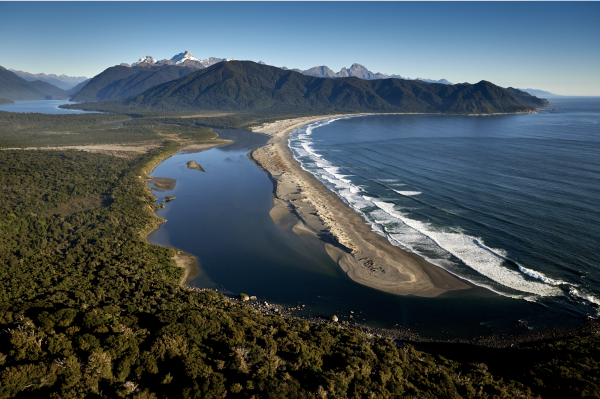
Above: Whakatipu Waitai, Piopiotahi (Martins Bay, Milford Sound). Photograph: Tony Bridge/Te Rūnanga o Ngāi Tahu collection, Ngāi Tahu Archive, 2018-0311
This helped him see how inseparable the Kāi Tahu story is from the land itself and the people who have called it home
for generations. Driven by a commitment to preserving this history, Paul sought to complete the narratives he came across during his research.
Poutini embarks on an indepth exploration of the history of Kāi Tahu within Te Tai o Poutini, revealing the historical layers of migration, survival, and the strength of cultural bonds.
The book begins with the arrival of Kāi Tahu ancestors in Te Waipounamu and the discovery of pounamu, a taoka that shaped identity and alliances. This greenstone became central not only to the history of Kāi Tahu, but also to relationships with the original inhabitants of the West Coast, Ngāti Wairangi.
Poutini delves into the conflicts between Kāi Tahu and Ngāti Wairangi over access to and control of pounamu. “I set out on this journey to do my part,” Paul says, underscoring his desire to document how these early conflicts and strategic intermarriages secured the mana whenua status of Kāi Tahu on the West Coast and over pounamu.
Poutini extends beyond early history into significant changes brought by the arrival of Pākehā settlers and the West Coast gold rushes.
These periods saw waves of newcomers and created an environment of rapid transformation, affecting Kāi Tahu communities’ access to their lands and resources.
Gold rushes led to massive settlement and disruption, drastically altering the relationship of Kāi Tahu with the
whenua, but Paul reframes these events within a larger story of resilience and adaptation, illustrating how Kāi Tahu navigated the challenges, striving to uphold cultural values and protect ancestral rights.
In later chapters, Paul focuses on modern milestones, including the 1998 Ngāi Tahu Settlement Act, which symbolised the longsought recognition of the rights of Kāi Tahu. The act marked a turning point in the iwi’s efforts to reclaim resources and lands.
Paul’s portrayal of the settlement reveals it as more than an economic gain; it represents a reassertion of mana and a renewed bond with the whenua. For him, Poutini is a means of grounding this modern success within the larger historical journey of Kāi Tahu, connecting readers to the ancestral voices that paved the way.
He points out the world he grew up in was “a different place back then ... we had no marae, we didn’t have the formal gatherings and sense of culture we have now. We didn’t even know our own history.” He recalls kapa haka in school, then referred to as “culture,” which involved making piupiu from plastic straws.
Despite this he still had access to the most valuable cultural resource – his ancestors. “The kaumātua I spoke with were only one generation away from living at the old pā,” he says, understanding how his elders maintained an unbroken connection to their heritage despite the changes surrounding them. “They trusted me with their stories, with their whakapapa.”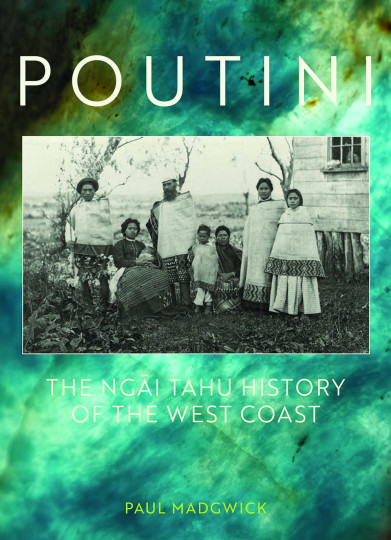
Beyond his work as an author, Paul has served as Chair of Te Rūnanga o Makaawhio for over 20 years, advocating for Makaawhio’s voice within Kāi Tahu and beyond. His leadership has focused on ensuring the cultural values and perspectives of Makaawhio are represented in decisions affecting the region.
One of his most visible achievements is the Te Ara Pounamu pathways centre in Māwhera, Greymouth – one of several state of-the-art immersive experiences on the West Coast, dedicated to sharing the stories of pounamu, the pounamu wars, and Kāi Tahu migration.
Te Ara Pounamu is a testament to Paul’s historical expertise and commitment.
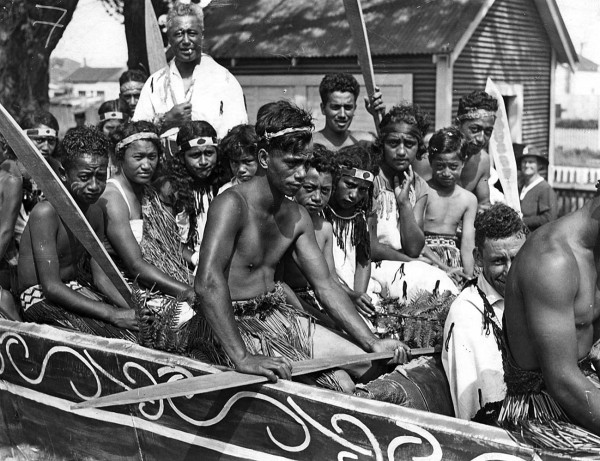
Above: Ngāti Waewae aboard their float 'Tairea waka,' in the New Zealand centenial parade in Greymouth, 1940. Standing: Ihaia Weepu. Back row: Harriet Mason, Kath Weepu (nee Thomas), Bill Weepu. Middle row: Fred Tuhuru, Ritea Uru, Te Maori Raukawa Mason, Miriam Mason, Tangi Weepu, Sam Luggy te Moanaroa Tuhuru. Front row: Te Whakamarurangi (Tom) Tainui, Jim Tainui, Rima Mason, Mona (Lady) Mason, John Tuhuru, Bruce Sampson (Front, partly-obscured).
"Holding Poutini feels like holding a true taoka for Kāti Māhaki and all Māori. This book isn’t just a collection of stories; it is our whakapapa, our history, and our identity woven together. For the first time, we have a complete account of the Māori history of Te Tai Poutini, told by one of our own. This distinction is vital, as it brings a deeper resonance to stories that have been part of our community for generations. Tā Tipene speaks of the role of our iwi in retaining cultural heritage and identity. This work is our responsibility, one that no one else can fulfil. Through Paul’s earlier work on Aotea and the establishment of our rūnaka, we’ve been given the ability to name and honour our mauka, our awa, and our pūrākau. Without these foundational contributions, I can’t imagine how Kāti Māhaki would have preserved its collective identity. Poutini also reminds us of our place in the continuum of time. As Māori, we exist in the past, present, and future, and this book holds all three of these spaces, connecting us to our tīpuna and guiding our mokopuna forward. For so long, we were denied the opportunity to speak our language, to know our history, or to honour our ancestors. Now, thanks to people like Paul, we can do all three. We acknowledge this incredible koha, this gift he has given us through his lifetime of commitment and mahi. Paul, he rakatira koe, he tohuka koe. E poho kukupā ana mātou i tāu nā mahi whakahirahira, he tino taoka, tēnā rawa atu koe."
Kara Edwards